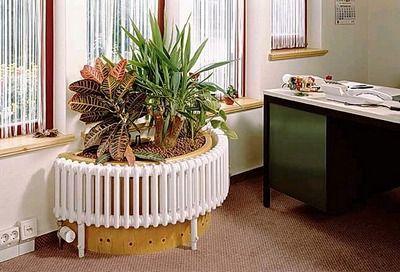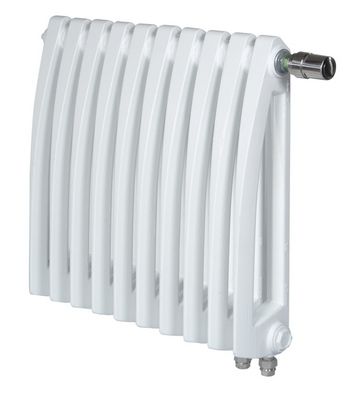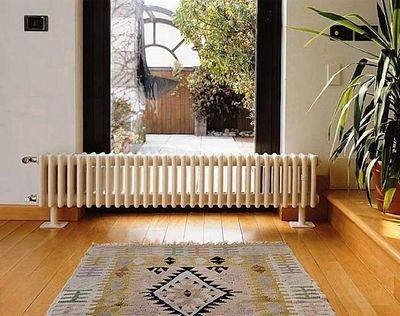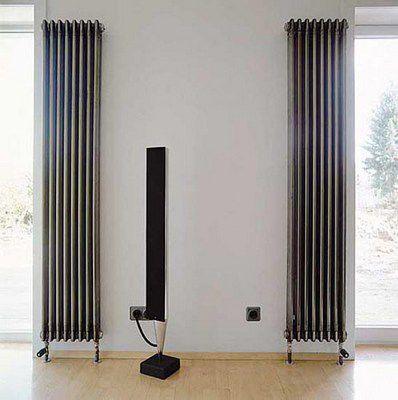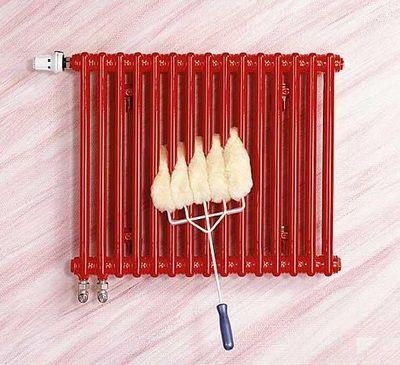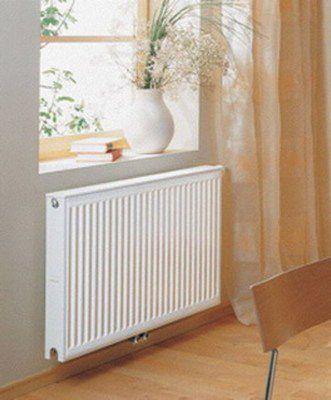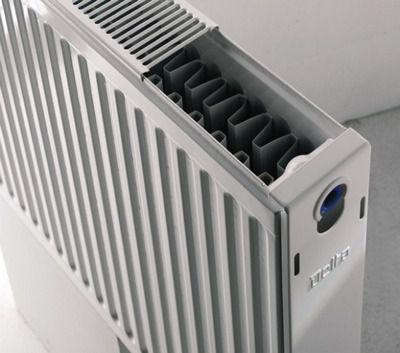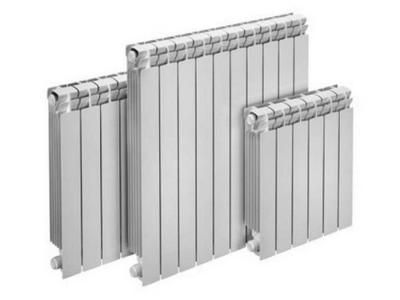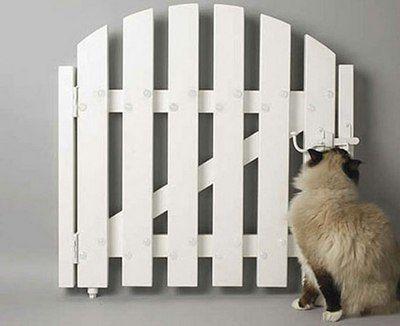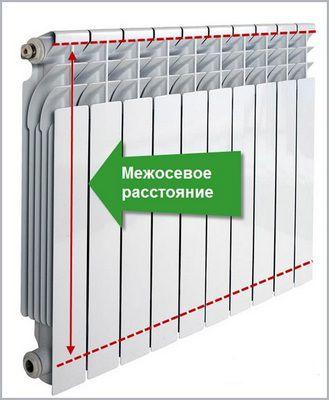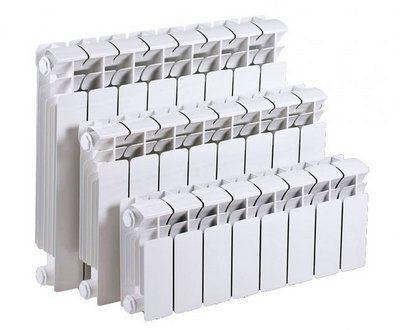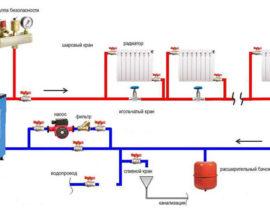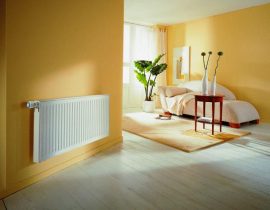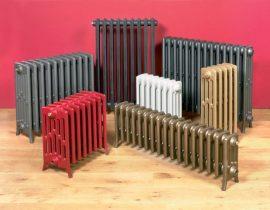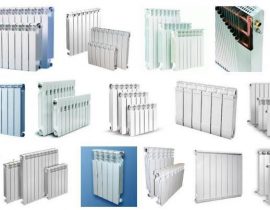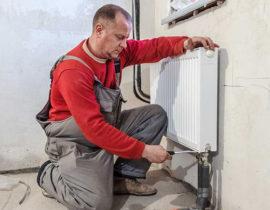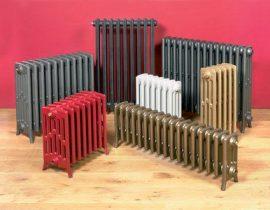After building a house or making a decision to replace the heating circuit in the apartment, in front of each homeowner stands up question — which radiators are better to choose?
If before the choice was small, and the best, and often — cast iron batteries were the only option, then today's the market offers a wider range of these elements of the heating system. To dwell on one of the presented types, you need to know some nuances, such as technical and operational characteristics, rules calculation the number of certain radiators per certain area, their power and heat transfer, the order of installation of radiators and others.
It’s not enough just to like the external design. The main thing for batteries thenso that they are functional and warm the room as much as possible.
Video - Which batteries to choose?
So, today the attention of consumers is offered steel radiators of two different types, cast iron, bimetallic and aluminum.
Which cast-iron heating radiators are better, how to recognize a quality product?
Although for changing good old cast-iron radiators came modern radiators, you should not dismiss the "accordions" proven over the years. It should be noted that they have not ceased to be popular, and many prefer them. If earlier cast-iron batteries did not have a very attractive appearance, due to rough surface and unaesthetic shape, today designers have done a great job with their appearance.
Today, a cast-iron battery not only does not require cover her decorative screen, but itself can become a worthy design element of any room. More one problem gone — This is a periodic painting of batteries. Modern import options have a transformed appearance, and you can choose them for every taste, how size, color, and even shape.
A very important addition to modern cast-iron heating elements are the legs arranged on some models, so there is no need to spoil the walls, driving in they have brackets. The battery is simply installed on the floor and connected to the heating circuit.
They can be made antique, with cast ornaments, or they can ideally fit modern styles of interior design.
More one advantage of cast iron options is their unpretentiousness, they will function perfectly both when installed in a central heating system and in an autonomous one.
These radiators have always been valued precisely because of the properties of the material from which they are made. — cast iron. It has the property for a long time warm up, but for a long time keep warm after turning off the heating of the coolant. Cast iron is characterized by excellent heat dissipation, which is very important for quickly obtaining the desired microclimate in the room.
A very important condition reliable and long-term operation of cast-iron radiators, is their installation and high-quality connection detachable connections.
Domestic and imported options
Today, domestic and imported cast-iron radiators are presented on the market.
Italy and the Czech Republic, Turkey and Spain, England and Germany offer their products, and they differ significantly from frommore aesthetic and high-quality surfaces.
- Important distinguishing feature — increased thermal power of the product with smaller dimensions. For example, the classic Russian radiator made of cast iron is MS-140 volume 1, 3 liters, and batteries made in the Czech Republic - only 0.8 liters, while the heat transfer from them is the same. Thus, if the Czech version is purchased, it will be more compact than the domestic one.
- In addition, imported radiators have an almost perfectly smooth inner surface, which reduces the resistance to coolant movement and the formation of layers scale.
- These cast iron products are resistant to corrosion, which allows them to be used in open heating systems, where the percentage of oxygen in the coolant is much higher than required.
- The thick walls of the radiators increase the resistance to abrasive wear.
- All imported options go on sale in a painted form, while domestic ones require painting after installation.
- However, it should be noted that imported batteries are always much more expensive than domestic ones.
Steel radiators, features of choice
Heating radiators made of steel are distinguished by a wide variety of designs and are available in two types: tubular and panel.
Tubular batteries
This type of steel batteries consists of sections that are fastened together by welding. The efficiency of these elements depends on the number of sections.
Tubular batteries are commercially available in various sizes and shapes. In many ways, it is their characteristic that makes many consumers opt for them.
- The height of steel tubular radiators can vary from 20 to 200 centimeters, and the thickness from 10 to 25 centimeters. The length is selected as needed.
- Steel batteries are designed for pressure from 10 to 15 atmospheres — this is a standart dli central heating. As usual, the manufacturer several underestimates the pressure when it indicates it in the passport, in fact, radiators are able to withstand several heavy loads, since water hammer can occur in a centralized system.
- The wall thickness of these batteries is much thinner than that of cast iron batteries, and is only one or one and a half millimeters, so they are easily subjected to mechanical damage.
- Radiators have a smooth surface, so they are easy to clean, and for some models even special brushes.
- Since sections of steel batteries are coated from the inside with polymeric materials, they are completely protected from the effects of an aggressive environment, so they are not afraid of corrosion. This increases their service life.
The negative points of steel radiators include:
- low percentage of heat transfer, therefore, if they are installed in an autonomous heating system, then the cost of paying for energy carriers will be significantly higher than with a circuit with other types of batteries installed;
— more one drawback is the welding that connects the battery sections, since during a sharp change in pressure in the system, it can become a “weak link” where a leak can appear. Therefore, it is better to install steel tubular specimens in a system with a stable pressure in the system, which can only be autonomous.
The positive qualities of these batteries include a rich variety of design solutions, and from the aesthetic side they can be called ideal. So, they are produced with an additional element in the form of a wooden panel, fixed from above, straight or curved, with the shape of cast iron batteries or beautiful bright tubes, which is excellent fit for the children's room.
Steel panel radiators
The advantage of panel radiators over tubular ones is their affordable price, as well as the absence of spot welds. Steel panels quickly heat up and, accordingly, give off heat to the room, but also quickly cool down. This factor makes such batteries uneconomical, because they must constantly warm up and boiler will work practically without breaks and means, for heating the coolant will be spend a large amount of fuel.
These batteries consist of two panels, between which there are corrugated metal parts (convectors). Per check Such a design results in good heat transfer from the panel to the room.
This type of batteries is designed for standard pressure in a centralized system and for coolant temperatures up to 90—95 degrees.
Panel radiators are divided into several types, determined by their thickness and design features:
- one panel welded from two sheets of metal - 10 type;
- one convector covered with one panel - type 11;
- two panels and one convector located between them - 21 types;
- two panels and two convectors located between them -22 type;
– three panels and three convectors – 33 type.
Their structure is clearly visible in the diagram.
To size, how in width and in height, panel batteries can be varied. You need to choose this heating device based on the size of the place where it will be installed. The length of the panel battery varies from 40 cm to 3 meters, and height from 20 to 90 centimeters.
Radiators are produced with lower or side connection, and which one to choose, — will depend on the location of the heating pipes.
The positive qualities of this design include the following points:
- Ease of installation, as the radiator has a one-piece design. It is simply hung on prepared brackets and connected to a common system.
- High percentage of heat transfer — this means that the room equipped such batteries will warm up quickly.
- Aesthetically pleasing design that does not require covering the radiator with a decorative screen. The device fits well into any room design.
- In autonomous heating, an important factor is the use of a small amount of coolant, which is needed for such radiators.
About the disadvantages of panel devices:
- Unlike tubular steel radiators, panel radiators do not have internal protection against corrosive effects.
- Just like tubular, these heating elements are undesirable to be installed in centralized systems. But if they after all are installed, then in addition to the circuit it is best to install a reducer that will control the pressure.
Aluminum radiators, why are they better?
Aluminum batteries are in demand among owners of private houses, as these devices are demanding on the coolant. It must be of sufficient quality, and this can only be ensured in an individual heating circuit. But they are leaders in sales not only due to the affordable price, but because of the modern design and positive characteristics.
Manufacturers usually set their service life from 10 to 25 years, but in the passport it is usually set to the minimum, which means that the battery may well last a longer time with proper operation.
Aluminum elements of the heating system are designed for a coolant temperature of 100 degrees, for its pressure in the system up to 17 atmospheres, power (heat transfer) up to 210 watts. Capacity each section is 450 ml, and her the weight — from one on on1.5 kilograms.
The sections are fastened into one radiator, and there can be as many of them as necessary for given premises.
The proposed figure shows a separate section from which batteries of the required size are assembled. Center distance standards are 20, 35, and 50 centimeters, but higher options are also available, reaching up to 80 centimeters.
Like other types of batteries, aluminum has its pros and cons.
- Light weight, cost-effectiveness, ease of installation, temperature control, high percentage of heat transfer, convenient dimensions, design solution that fit to any room — All this refers to the pluses of these radiators.
- The disadvantages include a high risk of gas formation, which can lead to damage to the battery from the inside, the concentration of the main heat on ribs, the possibility of occurrence leaks on the connection of sections for various reasons.
To avoid increased gas formation, you need to put on each battery air vent, which will be automatically triggered when needed.
Some aluminum radiators are prone to corrosion. This factor will directly depend on the manufacturer. — some of them carry out anti-corrosion treatment, which helps to avoid premature damage to the device.
Other aluminum radiators are also produced — from high purity material, which undergo oxidation (anodization). It allows you to protect the structure of aluminum from corrosive formations. The anodized batteries are rated at 60—70 atmospheres, their heat dissipation is much higher than that of conventional aluminum radiators.
Video - tips for choosing heating radiators
Bimetallic radiators, which are better for heating an apartment?
Every year, bimetallic versions of radiators, which are made of two metal alloys according to the combined principle, become more and more popular. From the inside, such batteries have a steel surface, and outside — enamel coated aluminium.
Bimetallic radiators, just like aluminum ones, consist of sections that are connected according to the same principle.
Thanks to the aluminum coating, the body of the radiator has a high heat dissipation and heat is evenly distributed over it.
The steel inner coating makes the radiator resistant to high baric loads and allows it to be used at high pressures up to 35—40 atmospheres, for example, in multi-storey buildings. If bimetallic devices are installed in a private house, then it is necessary to create a sufficiently high pressure in the circuit, otherwise the radiators should not function.
Bimetallic radiators have a higher cost than aluminum ones, although they almost do not differ in appearance. Perhaps this is their only significant drawback, but it is incomparable with numerous advantages.
- Compactness of forms and resistance to corrosive processes.
- Aesthetic and modern look allows the batteries to be used in the most simple and exclusive interiors.
- High thermal conductivity gives namely aluminum, thanks to its structural structure.
- Easy to operate. Batteries do not require painting, as they have a special two-layer hardened coating.
- High reliability creates internal steel case, which is able to withstand high pressure and temperature of the coolant.
- Ease installation, which the can be done on your own in the presence of skills, or you can invite a specialist, and he in a few hours he will install radiators in all rooms.
Video about the advantages of bimetallic radiators
To choose the right radiators, you need to take into account many factors and, relying on them, stop at the most suitable option. Of course, the financial issue is also important. that's whyhaving learned the prices, you need to calculate in advance how much cost each of the presented types of batteries. Focusing on all the collected indicators, you can go to the store and select specific radiators that match and volume heated rooms, and interior design of rooms.

